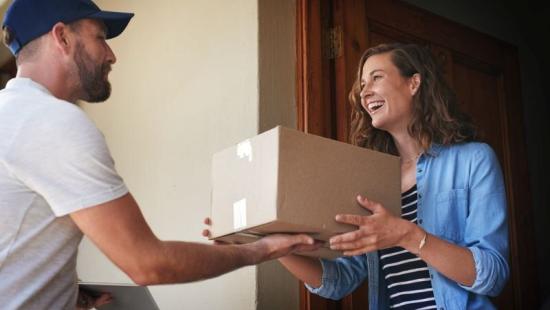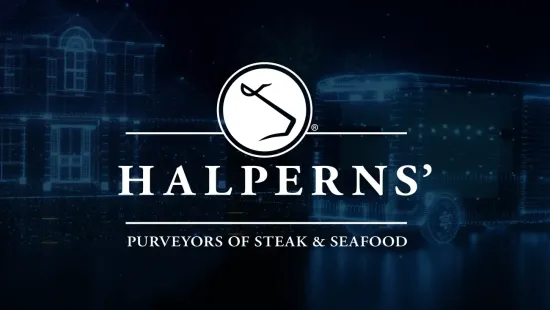Team Behind the Tech: Tim Reinert

Meet the Experts Helping Customers Excel with Descartes’ Routing, Mobile & Telematics Solutions
At Descartes, we believe that the last mile isn’t just the final step in delivery—it’s where customer relationships are solidified. In this edition of Team Behind the Tech, we’re spotlighting Tim Reinert, senior solution consultant, and highlighting the importance of customer engagement in final-mile delivery.
Tim joined the Descartes family 13 years ago following the acquisition of Airclic, a company specializing in mobile applications. His technical expertise and personable approach have helped businesses across industries optimize their last-mile operations and enhance customer satisfaction.
As part of the Descartes’ routing, mobile, and telematics (RMT) team, he works closely with customers to align solutions with their operational goals, ensuring efficiency and business success.
Learn more about Tim and get actionable strategies to strengthen customer engagement throughout the delivery process. Because effective engagement not only improves customer satisfaction but also reduces operational costs and enhances delivery reliability.

Can you tell us about your role as a senior solution consultant and how it supports businesses using Descartes’ solutions?
My focus is on helping businesses overcome the real-world challenges of last-mile logistics. I work closely with them to understand their operations, pain points, and goals—so we can align our solutions to deliver the greatest impact.
By acting as a bridge between our product team and the businesses we serve, I ensure that our technology evolves in ways that drive efficiency, reduce costs, and improve service levels. My role isn’t just about providing technical expertise—it’s about ensuring our solutions work seamlessly in the environments where they matter most.
Why is customer engagement critical for last-mile delivery?
Customers today are used to real-time updates—just think about how we track meal deliveries and rideshares. They expect the same level of service from every business they interact with. By proactively communicating with customers throughout the last mile, you can help them plan their day, improving both experience and delivery efficiency. Ideally, this will be through SMS or email updates, supported by an online order tracking portal.
This is especially important for attended deliveries, where the end customer must be present to receive the order. If they don’t know when the driver will arrive, they might miss the delivery entirely, leading to costly rescheduling and a poor customer experience.
How does customer engagement improve operational efficiency in the last mile?
The last mile is often cited as the most expensive part of the delivery process, so minimizing inefficiencies wherever possible is crucial. Automated communications help improve the first-attempt delivery rate by ensuring customers are prepared when the driver arrives. This enables drivers to complete more drop-offs per route while reducing the need for costly rescheduling.
Effective customer engagement technology can also reduce call center costs. Customers can easily track the progress of their delivery, so there’s no need for “Where’s my order?” (WISMO) calls. By automating feedback collection after a delivery, you’ll also reduce the need for follow-up phone calls. This frees up customer service teams to focus on customers who really need more assistance.
SOLUTION HIGHLIGHT
Route Planning, Execution, Safety & Customer Experience
Maximize your fleet's potential with industry-leading solutions and AI.
What are the biggest challenges businesses face in maintaining a strong last-mile delivery customer experience?
Rising Customer Expectations
Customers demand a seamless digital-first experience, whether ordering takeout, a TV, or even a business purchase such as construction supplies. Solutions like Descartes’ Customer Engagement Platform provide the transparency and real-time updates needed to meet these expectations.
Complex Last-Mile Operations
The last mile is complex, and providing customers with a precise ETA well in advance isn’t always feasible. That’s why it’s important to shrink ETAs as the delivery gets closer. Businesses can start with a broader time window in the morning and refine it as the route progresses. By the time the driver is a couple of stops away, you can provide a much more precise estimate, down to a 15-minute window or even an exact arrival time.
Operational Strain On Dispatchers and Customer Service Teams
Without automated updates, customers are more likely to make WISMO calls. Many businesses just don’t have the resources to deal with these calls effectively. By automating communications, you can satisfy the majority of queries without the need for a phone call. Service staff can spend more time with customers who need complex support.
How can real-time order tracking and ETA notifications reduce missed deliveries and improve customer satisfaction?
It all comes down to keeping the customer informed and ensuring they have what they need to plan their day.
Businesses can use a combination of SMS and email alerts, a web-based customer portal, and map-based driver tracking. Typically, end customers receive a reminder when the delivery is scheduled, followed by an update the day before the delivery. They can click on a link to view more information about the order.
On the morning of the delivery, they get another update to help them plan their day. Through the online portal, they can access detailed delivery progress and driver information, including a photo or vehicle registration number. Another message alerts the customer when their stop is next.
Shrinking ETA windows allow the customer to plan ahead for a successful delivery outcome.
What role does self-service technology play in enhancing the customer experience during the last mile?
People are used to finding information online in a couple of clicks. Nobody wants to sit on hold waiting for a call center agent to tell them where their order is. A self-service portal gives customers control—they can get the information they need, when they need it, without making a phone call.
In turn, self-service information reduces the burden on support staff. Your team can prioritize customers who need a phone call or are unable to use digital channels.
How can businesses use customer feedback collected after the delivery to improve their operations?
Real-time feedback is a game-changer for improving operations in the short- and long-term.
The Descartes Customer Engagement Platform captures feedback right after a delivery, when the experience is fresh, to maximize response rates. If there’s a negative experience, businesses can respond quickly and turn things around—sometimes even before the customer decides to take their business elsewhere. That can improve retention and even boost Net Promoter Scores (NPS).
Over time, this feedback helps businesses spot trends, identify operational bottlenecks, and recognize top-performing drivers. It’s not just about fixing problems—it’s about continuously improving.
What strategies can companies implement to proactively address delivery delays and maintain customer trust?
Proactive communication is key. Customers don’t necessarily mind delays, but they do expect transparency. Businesses that proactively communicate allow customers to adjust their plans accordingly, reducing frustration and maintaining trust.
How do tools like Descartes’ Customer Engagement Platform help businesses balance efficiency with customer satisfaction during the last mile? Are there real-world examples you can share?
Many businesses view last-mile customer experience as just a cost center, but the reality is that effective customer engagement can drive operational savings. By improving first-time delivery success and reducing inbound calls, businesses enhance efficiency and foster repeat business.
Take Halperns’ Steak and Seafood, for example. They’ve significantly reduced the number of calls and emails from customers asking for ETAs simply by providing proactive delivery updates. Their customers get the information they need without having to reach out, which improves satisfaction and cuts down on the workload for sales reps.
It’s not just customer-facing teams that benefit. With real-time visibility into order statuses, Halperns’ sales reps no longer need to chase down delivery updates, and drivers have a direct line to sales contacts—eliminating the need for multiple calls to customer service. That kind of efficiency improves flexibility, reduces delays, and makes last-mile operations run much more smoothly.
What trends in customer engagement should businesses prepare for in the coming years?
I believe we’re going to see customers demand greater control over their delivery experience and expect communication through emerging digital channels, such as instant messaging apps and Rich Communication Services (RCS).
How can strong last-mile customer engagement lead to increased retention and future sales?
Empowered, happy customers come back. It’s as simple as that. If you make their lives easier, they’ll want to do business with you again—and they’ll tell their friends about it.
Empowering Businesses to Succeed in the Final Mile
Tim’s expertise highlights how Descartes’ solutions help businesses adapt to the unique challenges of last-mile delivery. By leveraging tools like real-time tracking, automated notifications, and AI-driven insights, companies can improve first-time delivery rates, reduce costs, and enhance customer satisfaction—even during peak periods.
Looking to improve the last-mile customer experience? Explore how Descartes’ Customer Engagement Platform can help you elevate the customer experience while lowering operational costs by offering transparency and control. Contact a solution expert to get started.
Fleet Resource Center
Expand Your Routing, Mobile & Telematics Knowledge
Recommended For You



